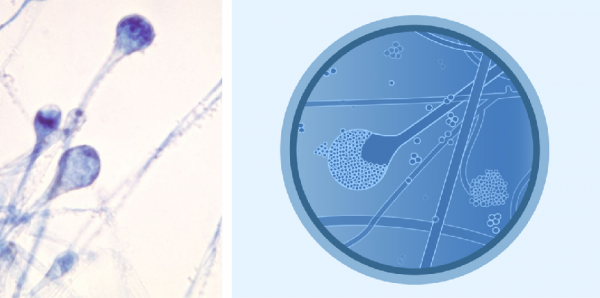
Mucor live in our environment
We encounter black fungus almost every day. They are not harmful most of the time. Only with people who have weekend immune system for various reasons will get it. Rhizopus is one of the common mold fungi that we come across on fruits.
Mucormycetes, the group of fungi that cause mucormycosis, are present throughout the environment, particularly in soil and in association with decaying organic matter, such as leaves, compost piles, and animal dung. They are more common in soil than in air, and in summer and fall than in winter or spring. 2-4 Most people encounter microscopic fungal spores every day, so it’s probably impossible to completely avoid coming in contact with mucormycetes. These fungi aren’t harmful to most people. However, for people who have weakened immune systems, breathing in mucormycete spores can cause an infection in the lungs or sinuses which can spread to other parts of the body.
Types of fungi that most commonly cause mucormycosis: Examples are: Rhizopus species, Mucor species, Rhizomucor species, Syncephalastrum species, Cunninghamella bertholletiae, Apophysomyces species, and Lichtheimia (formerly Absidia) species
Image Credit:- Nephron, CC BY-SA 3.0, via Wikimedia Commons
Author: Sumana Rao | Posted on: May 26, 2021
« What are the types of mucormycosis infections? Understanding and Preventing Black Fungus Infection »






















Write a comment